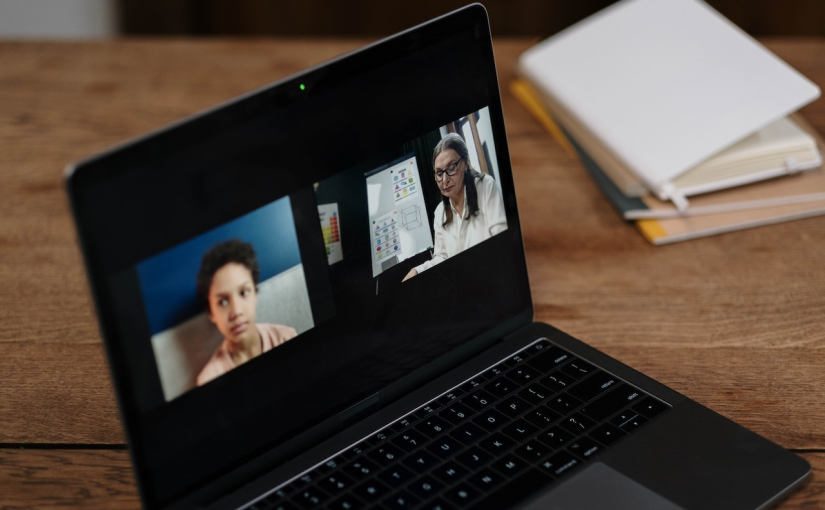Shifting to remote work has had a significant impact on B2B audiences and attendance of webinars. Work-from-home accelerated by the pandemic brought several changes in how people engage with media and webinars and other online events in particular.
Imagine you’re a software company hosting a webinar for B2B clients. Instead of a generic topic, you decide to address a specific pain point your clients face – data security.
Your webinar perhaps offers insights into the latest data breach trends, real-life case studies of companies that suffered breaches, and actionable steps to strengthen data protection. Attendees leave with a comprehensive understanding of potential vulnerabilities and practical solutions they can implement.
Sounds pretty compelling doesn’t it?
If you’re a software company and you’re not running regular webinars, you’re missing a trick.
For marketing agencies hosting webinars on content strategy the standard title of “Effective Content Strategy Tips” is likely more compelling when rephrased as “Unlocking the Power of Content for greater ROI”; this re-hook captures attention and conveys the value attendees can ultimately expect. So while content hasn’t changed necessarily, the way it is positioned may change your signup rates.
Would you attend a medical technology webinar on telehealth where there is no expert on the agenda? Probably not, having an SME (Subject Matter Expert) on the agenda could make all the difference in terms of credibility. Medtech companies usually target presenting professionals of repute, who have been at the forefront of their field, like virtual healthcare. The SME’s reputation will likely draw in a better-sized audience interested in hearing insights from a recognized expert.
Management consulting firms that conduct webinars on leadership development ask attendees to share their top leadership challenges through live polls. This interactivity with the audience in real-time, makes participants feel their concerns are being addressed directly and keeps the audience engaged. Polls are always a great frame-up for speakers too!
If you run an e-commerce platform then prospects and existing customers want to hear stories from the trenches – they want to hear other customers’ experiences. Combining slides, video content, and successful customer interaction scenarios combined with a live chat with customer support teams could create a multi-faceted experience that keeps attendees engaged.
Trying to engage a global B2B audience is tough with time zones. Instead of hosting a single webinar consider multiple sessions at different times to cater to different time zones. Hold a session during European business hours and another during Asian business hours, to increase your international reach.
You’d think the day of the week doesn’t matter; selecting a Wednesday for a webinar on say streamlining logistics processes is an astute move when considered in the context of knowing that midweek is generally when businesses are in a “working mode” and are more likely to allocate time for professional development.
A one-hour webinar is tidy, but your speakers will fill all the time you allocate. A two-hour webinar is a bit long and will likely see audiences drop off after sixty minutes anyway. Settle on a 45-minute session where you cover key strategies, present a real-life success story, and host a brief Q&A, ensuring participants’ attention is maintained throughout the event.
The webinar invitation is underestimated in terms of its impact. Invitations highlight the message you want to convey and depending on where you received your mailing list from, could be just what existing customers are looking for, or might spur prospects into action, point out that you plan to showcase your company’s understanding of customer and prospect-specific needs.
Something you can leverage as part of the early signup is an incentive. Mention this on the landing page, in the invitation, and in the various calls to action that you might send to customers and prospects. Tempt them with details of a white paper, a discount, a private consultation, or a tchotchke for early signup.
Running a webinar solo, even with an expert in tow, may not tell the whol story you want to tell. Consider finding a partner to join the webinar with you. This could be a reseller, an integrator, a promoter, or an organization with adjacent and vested interest. This will diversify the content and you likely harvest sign-ups from their stable of contacts too!
Observers love social proof, this can come in the form of customer or beneficiary testimonials that showcase the positive impact of past webinars, your product, or services. The value derived from webinars should be spoken about to encourage signups and build audience trust and demonstrate the value participants could gain.
After a webinar o always send attendees a follow-up email. The email should include a link to the webinar recording, a summary of key takeaways, and perhaps even something exclusive.
Provided you recorded that webinar, it could have a half-life beyond your wildest expectations. Once you’ve held the live session, post and promote the past event online in order to harvest more viewers and contacts.
Each of these strategies, when thoughtfully executed, contributes to a successful B2B webinar campaign that holds the potential for attracting a willing and engaged audience.
By focusing on delivering genuine value and respecting the audience’s time and needs, your company can build strong connections and foster lasting relationships.
